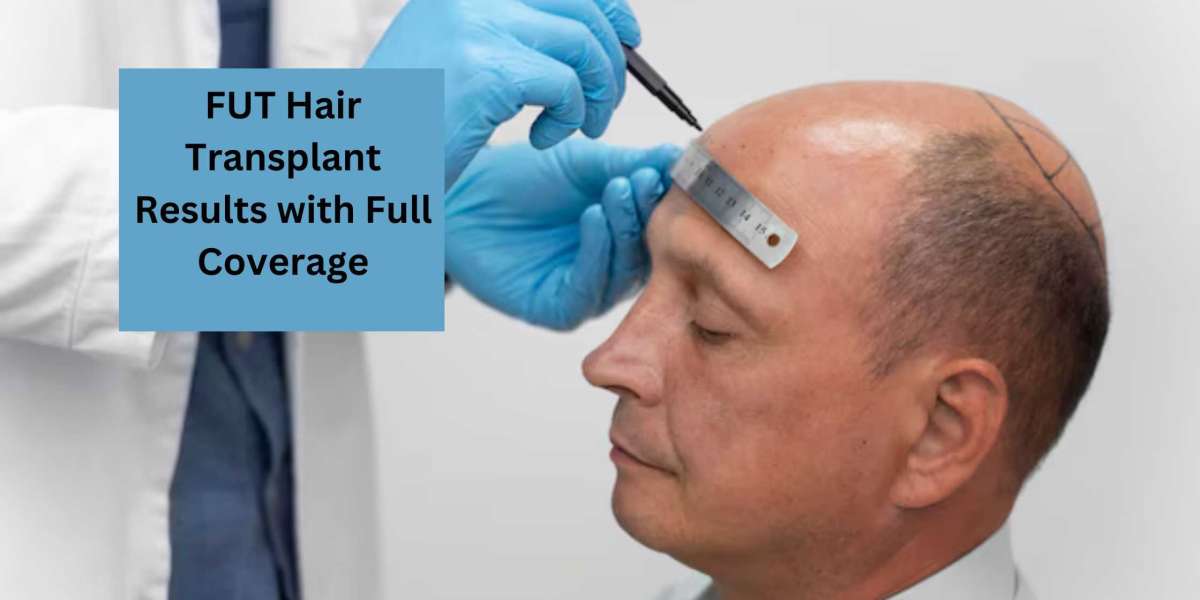For individuals facing advanced hair loss, the desire for a long-lasting, natural-looking solution is more than cosmetic—it’s deeply personal. FUT hair transplant results have proven reliable, especially for those aiming for full scalp coverage. The Follicular Unit Transplantation (FUT) technique, known for its precision and ability to harvest a high volume of grafts, remains one of the most effective hair restoration methods. Whether you’re suffering from a receding hairline, thinning crown, or complete pattern baldness, FUT may provide the density and coverage you want. Let’s explore how FUT works, what to expect during recovery, and how to achieve the best FUT hair transplant results.
Understanding FUT Hair Transplant
FUT, also known as the strip method, involves surgically removing a thin strip of scalp from the back of the head (the donor area), where hair is typically resistant to balding. Skilled technicians then dissect this strip into individual follicular units under a microscope and implant them into areas with hair loss. This technique is perfect for patients who require complete coverage because it enables surgeons to perform thousands of grafts in a single session. Compared to FUE (Follicular Unit Extraction), FUT is often more suitable when many grafts are required, leading to more comprehensive FUT hair transplant results.
Factors That Influence Full Coverage Results
While the FUT method is robust, full coverage depends on several factors:
- The volume of hair loss: The more advanced your hair loss (measured using the Norwood scale), the more grafts you'll need for complete restoration.
- Donor hair density: High-density donor areas provide more grafts and better coverage.
- Surgeon’s expertise: FUT requires precision in both extraction and implantation. A skilled surgeon can maximize graft survival and achieve natural FUT hair transplant results.
- Scalp elasticity: This affects how easily the strip can be removed and how well the donor area heals post-surgery.
Each element contributes to how successful and natural-looking your FUT hair transplant results will be.
Timeline of FUT Hair Transplant Results
Understanding the recovery and hair growth timeline helps set realistic expectations:
- Immediately post-surgery: The scalp will be sensitive, with visible scabbing around newly implanted follicles.
- 1–3 months: Normal hair shedding (shock loss) occurs. Hair enters a resting phase before new growth begins.
- 3–6 months: First, new hair emerges, typically soft and delicate.
- 6–12 months: Thicker, more defined growth occurs, filling the treated areas and creating visible change.
- 12–18 months: This is when you’ll see your final FUT hair transplant results, including fuller density and natural blending with your existing hair.
Before and After: Real FUT Transformations
When performed by an experienced surgical team, FUT hair transplant results can be transformative. Patients who once suffered from severe balding often regain thick, youthful hairlines and full scalp coverage. Before-and-after photos showcase dramatic differences, highlighting improved self-esteem and facial aesthetics.
In fundamental patient transformations, FUT often delivers fuller crowns and dense hairlines that are difficult to distinguish from natural, untouched hair. These real-life results reinforce the value and effectiveness of the FUT technique for long-term hair restoration.
Tips to Maximize FUT Results
Your results don’t just depend on surgery—aftercare is critical:
- Follow post-op instructions: Keeping the scalp clean and avoiding scratching is essential.
- Eat a nutrient-rich diet: Hair growth relies on iron, zinc, biotin, and protein.
- Use doctor-recommended hair products: Gentle shampoos and topical treatments can encourage faster, healthier growth.
Maintaining these habits will accelerate recovery and enhance the quality of your FUT hair transplant results.
Is Full Coverage Always Possible?
It’s essential to be realistic. While FUT can restore a significant amount of hair, full coverage depends on the donor supply and the extent of your baldness. Sometimes, a combination of FUT and FUE may be necessary for optimal coverage. Focusing on high-impact areas like the frontal hairline and crown might be prioritized for patients with limited donor hair.
A reputable surgeon will evaluate your goals and create a plan tailored to your scalp anatomy and hair growth pattern. This ensures that your FUT hair transplant results align with your expectations and what’s medically achievable.
Cost of FUT for Full Coverage
The number of grafts, clinic location, and surgeon experience affect FUT costs. FUT is generally less expensive per graft than FUE, which makes it a sensible choice for patients who need extensive coverage. While pricing is an essential factor, it’s vital to consider the value of quality care, long-lasting FUT hair transplant results, and the improved confidence that comes with restored hair.
Conclusion
FUT offers a high-yield solution that delivers full scalp coverage with natural-looking, permanent results for men and women with extensive hair loss. With the right surgeon, supportive aftercare, and patience during the growth timeline, FUT hair transplant results can be life-changing. If you're seeking full coverage and considering FUT, consult a specialist who understands your goals and can deliver proven outcomes. Beverly Hills Hair Restoration is recognized for its expertise in FUT procedures and is committed to helping patients achieve exceptional, confidence-boosting results.











